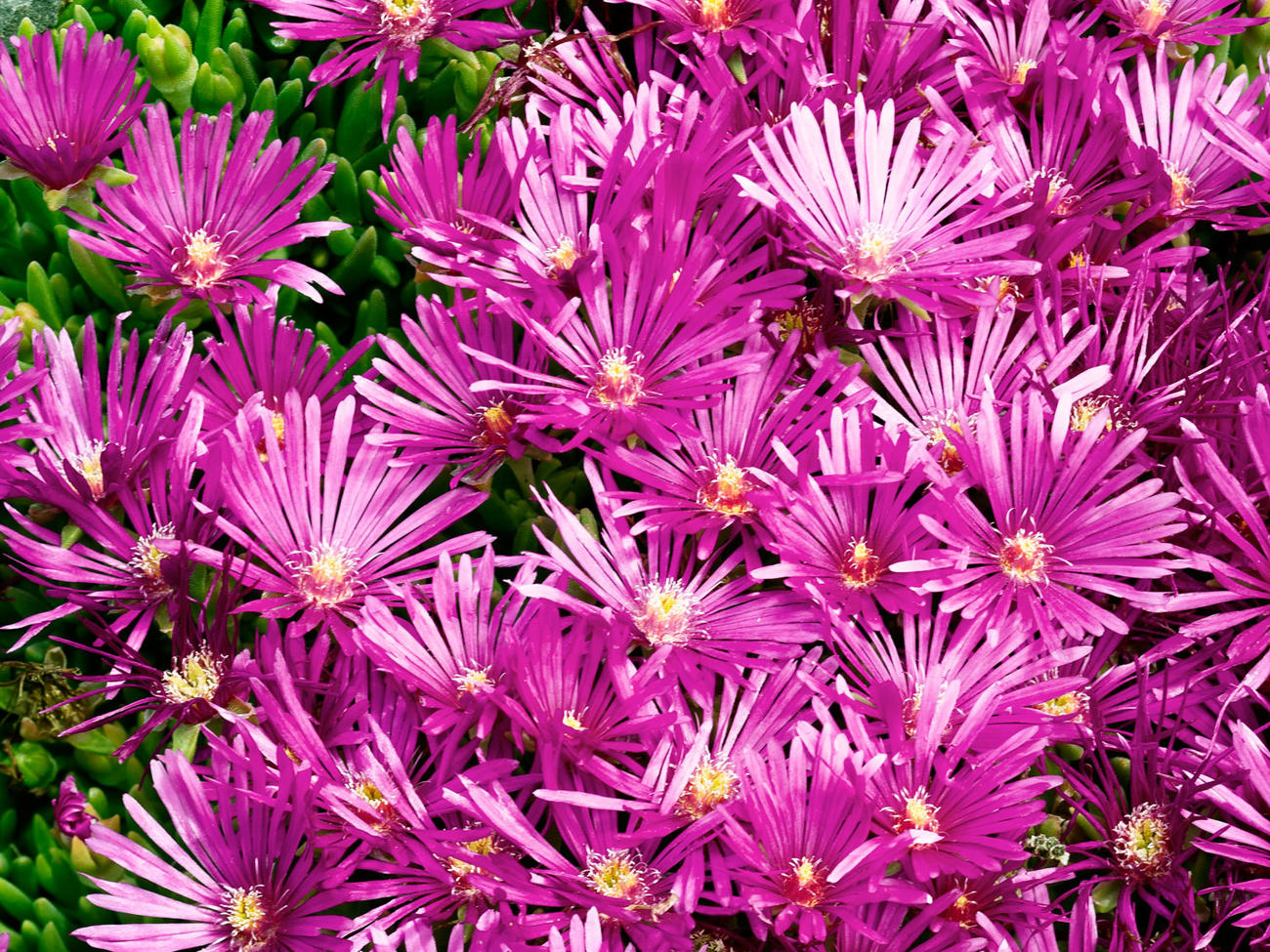
Caring for Ground Covers
Simple tips for keeping up these low-maintenance plants

Photo by Mark Turner
Some plants can slow a fire if they’re watered and pruned regularly like the ice plant (Delosperma): a groundcover with succulent leaves and daisylike flowers of bright pink (D. cooperi) or yellow (D. nubigenum).
Most ground covers require little attention beyond routine watering, mulching, fertilizing, and grooming. In many cases, maintenance takes very little time – especially when compared to the hours typically invested in lawn care.
Watering
Ground covers, like any other plants, vary in their moisture needs, depending on the type and age of the plant. Soil texture and climate influence water needs as well. In general, however, most ground covers require regular water when young but may do very well with only occasional irrigation or with rainfall alone once they are mature and established.
